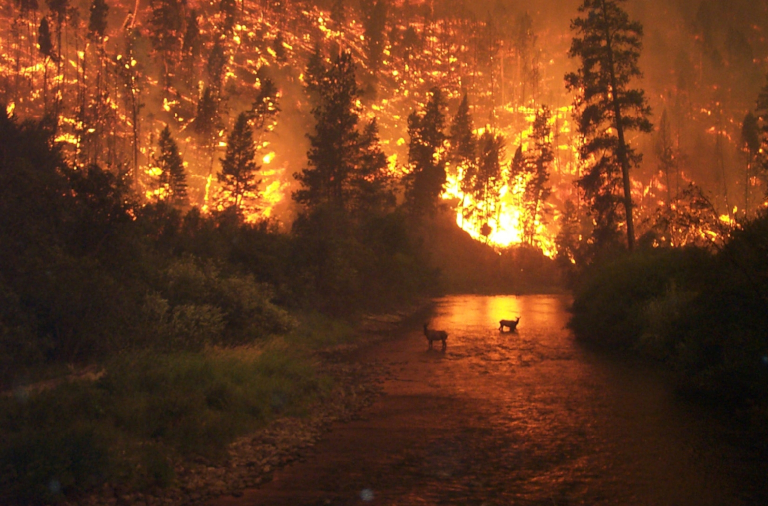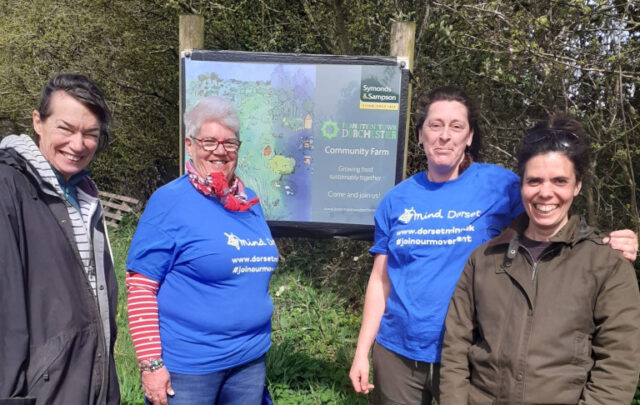Earlier this summer I travelled from my home in the Pacific Northwest to Colorado’s Grand Mesa for a family reunion. It was great to see relatives I hadn’t seen for years, and little ones I hadn’t even met yet. What wasn’t so great was seeing the state of the forests passing by my windshield.
Again and again I encountered regimented landscapes of single species monocrops, same-aged, often packed together, marching shoulder to shoulder toward the mills. They are on a schedule, destined to be cut anywhere from 40 and 150 years after sprouting, just when, depending on species, they are reaching adolescence or young adulthood.
This is a terrible thing to do to any living community, but especially a forest. World-renowned forester Peter Wohlleben points out that trees are, by necessity, learning beings. Unable to move, they must intimately sense and understand their places, and in particular, the climates of their places. From the tips of their leaves to their deepest and farthest root hairs, they sense over 20 separate parameters, an ability that allows them to not only survive but thrive in the places they find themselves. And they don’t do this alone. They are enmeshed together through subterranean webs of fungal cilia and in constant, mutually beneficial exchange. A two-hundred-year-old adult tree has 200 years’ worth of this gathered knowledge. A 600-year-old elder has 600 years. A 40-year-old, sprouted in a greenhouse, growing in a crop of other forty-year-olds, has not much.
Since these forests are starting to burn, many now are being thinned, but the thinned forests looked worse for the treatment. The scrawny leave-behinds appear shocked, their needles browning, the ground between them sun-battered and dusty, dry desiccating winds blowing through.
These tortured landscapes are what politicians call “working forests,” and they certainly look it. The more scientific term is “managed,” and they look that too. They also look depressed, depleted, and most especially desiccated. They look like creatures unable to hydrate themselves because their means to do so is continuously cut out of them.
When I was in Standing Rock, supporting the stand against the Dakota Access Pipeline, I often heard the Lakota phrase Mni Wiconi, sometimes shouted as a war cry, other times whispered like a blessing. It translates to water is life. I’m sure its full meaning can only be understood by the Lakota themselves speaking to each other, but the translation is powerful enough—two words, water and life, separated by the verbal equivalent of an equals sign. It’s meaning can be read in both directions. Water is life is also Life is Water.
Western science has its own take on this relationship between life and water. The US Department of Agriculture, for instance, calculates that with every 1% increase in soil organic matter, soil is able to hold 20,000 to 27,000 additional gallons of water per acre in the top 6 inches of soil. And that’s just in the soil. The biologically richer soil not only holds more water, it grows more life, which again means more water. It’s what Mediterranean meteorologist Millan Millan refers to with his tercet: water begets water, soil is the womb and vegetation the midwife. The growth of each, water and life, reinforces the growth of the other, in a frictionless, mutually beneficial dance towards increase and resplendence.
A few days ago I got a chance to see, feel and even taste the dance when I walked partly around a lake called Paulina, named after the Northern Paiute chief, Pahninee, known for his fierce resistance to settler encroachment. The forest around it’s perimeter, if ever cut, was done so long ago. True giants had grown back, including ponderosa pines 3 feet thick, living up to their Western name. The canopy was complex and multilayered, with a diversity of species and ages. Large dead snags stood gathering bright green moss. Other giants lay like sagging rivers, their spongelike pith crisscrossing the land with moisture-holding capacity. All of it sinking down and creating soil atop the sandy subsoil. Evidence of wildlife abounded: bear scat, scratched open dead-fall, tree-hollowed nests.
The coolness I could feel, but there was also a taste to the air, which was gin clear, that was vaguely sweet and somehow related to the air’s stillness. It felt as if I had walked into a room and closed a door behind me. And in a sense I had. The room was made by the forest and I had walked into its microclimate, a microclimate that used to be the macroclimate.
As I returned to my campground, which abutted managed forests, I could feel the air warm and could see it lose its clarity. Between the skinny trees around my camp the soil was dusty and sparsely covered in grass.
Scientists refer to such shifts as changes in the “surface energy budget,” but because living landscapes are so difficult to mathematically model, they are basically left out of the equation, and the conversation. But no one needs to solve any differential equations to understand the simple logic of water is life and life is water. To take the big trees out of a forest is to take big life out of a forest, and that is also to take big water out of a forest. To clearcut a forest, spray it with herbicides against whatever tries to regrow, plant it with greenhouse grown, genetically modified seedlings, is to destroy it outright, to erase it of its own biotic intelligence and insert a purely human design. In either case, should we be so surprised they are burning?
How can such diminished landscapes hydrate themselves sufficiently to create the moisture reserves needed to hold them through the increasingly dry late-summers? It would seem to take old, diverse, spongy, deep-soiled forests to first collect and then hold on to such moisture, along with large, deep-rooted trees to tap the aquifers. The aquifers, by the way, would be high because all spring and summer that life, by keeping water on the land, had been quietly filling them. Further, trees facing drought have a lot of decisions to make in terms of moisture retainment, photosynthesis, which leaves and needles to jettison and when. Without old trees, how does a forest know what to do?
With drought comes fire, and after fire, the rains, which now fall on unsheltered, sometimes flame-sealed soil, rushing off and flooding while further eroding the land. When the following summer comes there’s less life in the soil, holding therefore less water, serving drought yet again, in a dance of collapse the hydrologist Zac Weiss calls the watershed death spiral. It’s like Mni Wiconi in reverse.
And when talking forests fires, it’s necessary to keep in mid that fires are a natural part of forest ecosystems, which require a natural level of fire disturbance to maintain healthy diversity. Yet decades of heavy-handed fire suppression have disrupted these cycles, and new extraction under the guise of “fuel reduction” is only making matters worse.
The high levels of CO2 in the atmosphere certainly aren’t helping. A warmer atmosphere can hold more moisture, which it pulls from the land, increasing desiccation. But clearly our treatment of the land is also a major contributor. There’s even a scientific term for it—“land change,” though sometimes it’s called “land cover change,” or “land surface change,” and then there’s “land use land cover change.”
All these phrases refer to the fact the living surface of a landscape, the soil and what grows on it, has a profound relationship with and effect on the atmosphere and climate around it. Obviously, since life absorbs and sequesters carbon, it lowers atmospheric carbon levels, but the land’s more direct and profound influence has to do with water, in numerous ways. Like us, plants sweat, only on a much grander scale, especially trees, a scale by which they not only cool themselves but the air around them. They also feed vapor and rain-nuclei to the sky to make clouds and rain for further cooling and climate regulation. They feed, shelter and hold together soil and they slow down wind, lessening atmospheric mixing and preserving moisture. And in the Amazon scientists are discovering how forests literally draw moisture towards them from coastal oceans, creating rivers of vapor in the sky.
Related dynamics occur in prairie, desert, and marshland ecosystems as well. And since valley bottoms, floodplains, and open flatland is where we like to build our cities, towns, factories and airports, conduct agriculture and run cattle, this land and the life upon it has been rather “changed” as well. I noticed while driving how little I saw in the way of wetlands, though wetlands are what one would expect at the bottom of the tub-like basins between the mountains. As with forests, when we damage these ecosystems we damage their ability to hydrate themselves and moderate their climates.
This was made tragically visible by the recent fires in the Lahaina District of Maui, during which over 115 people lost their lives. According to Uahikea Maile, a Kanaka Maoli from Maunawili, Oʻahu, and an assistant professor of Indigenous politics in the department of political science at the University of Toronto,
“pre-colonial Lahaina was a wetland ecosystem abundant with life … But … in the late 19th and early 20th centuries white-owned sugar plantations on Maui started to illegally divert water to their crops, drying up the wetlands. … These plantations also introduced non-native plant species for animal grazing that have helped fuel the Maui fires.”
It wasn’t indigenous Hawaii that burned. What burned was a landscape of invasive grasses grown over abandoned sugar-cane plantations which were violently imposed across a long arc of settler domination. Land change is not only climate change, it is also culture “change,” with a long pain-trail largely hidden from our modern view.
*
By August 20 I had settled in a campground south of Bend, Oregon and the smoke from fires in all directions was getting thick. I got online to check the spread of the Bedrock Fire creeping toward highway 58, the most direct route between me and the coast, and switched to satellite view so I could see the landscape. I had to tilt my head at what appeared. Two different schemes of green, set off from each other by a hard, stair-step border, stared back up at me. One green was tan-speckled, like a golf course overrun with sand traps, with as many traps as remaining green. The other was a more solid field of shades of green. I recognized the tan-sculpted landscape immediately as state managed lowland forest, as we have the same checkerboard in Washington, thanks to the Washington Department of Natural Resources.
The more solid green was National Forest land, and at first it looked much better off, and in many ways it is. But as I zoomed in I saw the same gouged-out pattern come into view, only in a later stage of rotation. The tan and green had become light green and darker green. Since most of national forest is “working” forest, it’s likely that much of the dark green is on a schedule to become tan.
*
I finally make it to the ocean and stumble out onto the sand, hobbling on shifting feet toward toward the glittering immensity. For weeks I’ve been looking at dried-out landscapes and now all I face is water, blazing blue water, rising like a hill to the horizon, which rises to another behind it, and then another. The waves surge past my ankles, then pull on way back as my feet sink into the sand.
It’s hungry, this water. It wants. And that wanting includes the land. And the land wants the water; that too I realize, feeling it cave beneath my feet as if following an ache.
Turning back I look at the great western landmass I’ve gradually descended from, beginning 10,200 feet on Colorado’s Grand Mesa, crossing the southern spines of the Rockies and Cascades, traversing plateaus and basins, prairies and high deserts, all descending to a squat, sandstone bluff with two or three visible geologic bands rising out of the sand. On top, like a grey umber cap, a thin layer of soil holds up some grasses and low shrubs.
The sea seems to end behind me, but there it begins again, an inland sea, a soil-sea, spread all the way to the next ocean. It is the spongelike medium for not only life but water, the symphony pit for a great orchestration, which includes the climates we live in, the felt conditions of dryness and wetness, heating and cooling, extremity and moderation.
We’re not alone in this. The land knows what to do and is striving to do so all around the globe at this very moment. Isn’t it time we notice?





